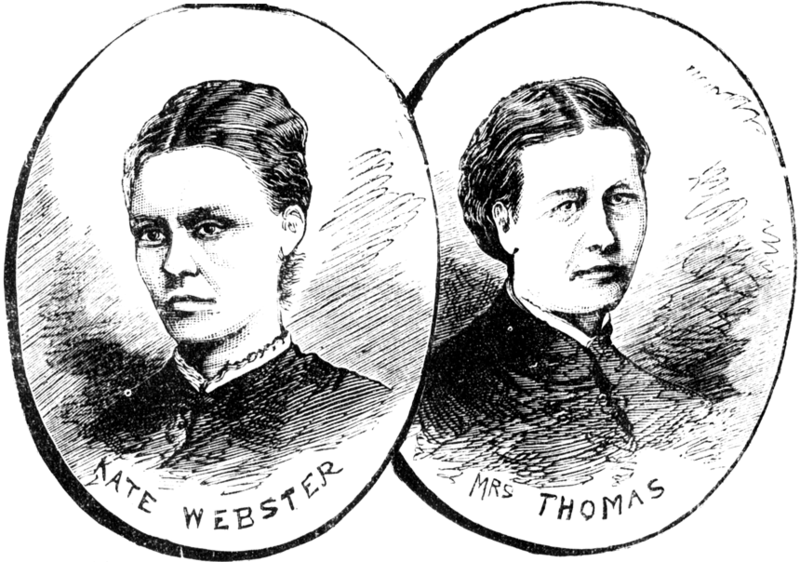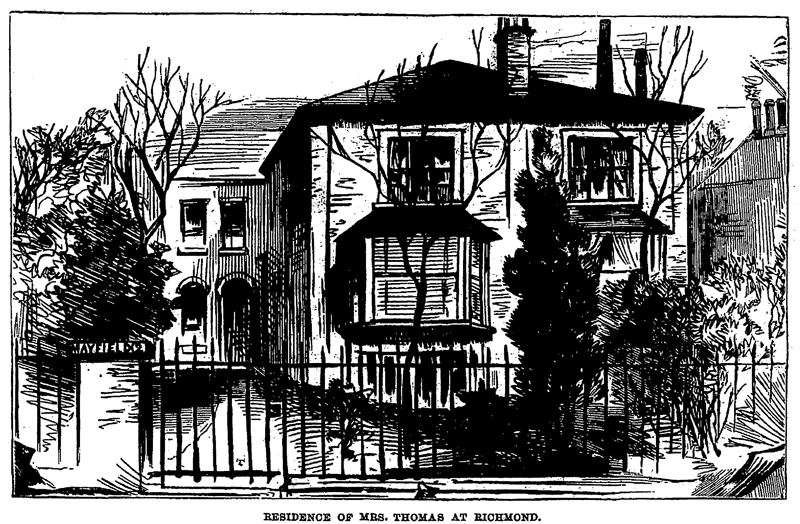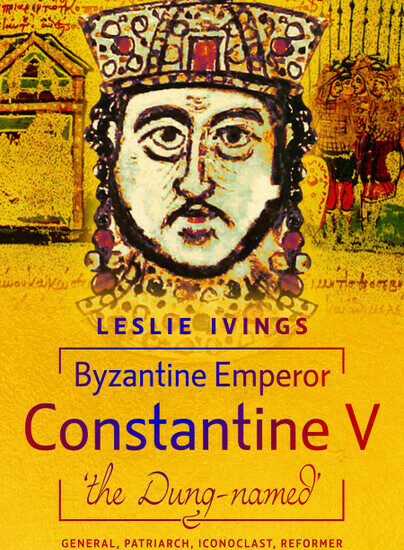Author Guest Post: Debbie Blake
THE BRUTAL MURDER OF JULIA MARTHA THOMAS
Mrs Julia Martha Thomas was a small, nervous lady in her fifties, who lived alone at 2 Vine Cottages, Park Road, in Richmond, Surrey. She liked to give the impression that she was a ‘lady of means’ and often claimed to be better off than she actually was, dressing in smart, expensive clothes and jewellery and employing a domestic servant. But, as she had a reputation for being difficult, Mrs Thomas had trouble finding and keeping servants and although she placed an advertisement in the local newspaper, she had no response.
However, a few months later, on 29th January 1879, through the recommendation of a friend, thirty-year-old Kate Webster, who unbeknown to Mrs Thomas, had an unscrupulous past, moved into 2 Vine Cottages to start work as a live-in domestic servant. Mrs Thomas was fanatical about cleanliness and would often criticise her new employee’s work, which led to frequent, heated arguments and within a few weeks she gave Kate notice to leave.

A few days later, on 2nd March, having spent her afternoon off drinking in the nearby public house, Kate returned home that evening where a terrific row broke out between the two women. Shortly after, Mrs Thomas left the house to attend the Sunday evening service held in the local church on Richmond Green, where according to witnesses, she seemed very upset and agitated throughout the service. Later that evening, when Mrs Thomas arrived home from church, there was another huge row, during which Kate lost her temper and pushed Mrs Thomas down the stairs. ‘She had a heavy fall.’ Kate later confessed:
‘I felt that she was seriously injured, and I became agitated at what had occurred, lost all control of myself, and, to prevent her screaming, or getting me into trouble, I caught her by the throat, and in the struggle, she was choked. I threw her on the floor. I then became entirely lost and without any control over myself, and looking on what had happened, and the fear of being discovered, I determined to do away with the body as best I could.’
Kate dragged Mrs Thomas’s body into the kitchen, cut it up and boiled the dismembered parts in a pot on the copper range. Afterwards, she burned the bones in the fireplace, put some of the body parts into a wooden box and the decapitated head into a black cloth bag, then scrubbed the house and the copper pot to try and erase any evidence.
Two days later, dressed in Mrs Thomas’s black silk dress and gold jewellery, Kate went to visit her old neighbours, Henry Porter and his wife Ann, in Hammersmith, West London. Apart from an occasional visit, the Porters had not seen Kate since she had left the area six years before and at first failed to recognise the smartly dressed woman on their doorstep. Kate sat down at their kitchen table, carefully placing the black bag she was carrying underneath and happily chatted away while she shared a drink with the Porters. She told them she had been married and her name was now Mrs Thomas, but sadly her husband had since died, and she was now a widow. However, she had been fortunate, as her aunt had recently died and left her a nice, comfortable home in Richmond, along with all her belongings, which she needed to sell as she was going back home to Ireland to look after her father who was very ill.

Later that evening, Henry Porter walked with Kate to the railway station in Hammersmith, while his unsuspecting son Robert, carried the black bag. They stopped at several public houses on the way and during the evening, Kate made an excuse to slip away and dump the bag into the river. Later that night, Robert accompanied Kate on the train back to Richmond and helped her carry the wooden box along the road to Richmond Bridge, where Kate said she was meeting a friend to pick it up. After telling Robert to go on ahead to the station, Kate dumped the box in the Thames.
Over the next two weeks, Kate continued to live at 2 Vine Cottages, impersonating Mrs Thomas and proudly showing off her new home to her friends. Meanwhile, the box containing Mrs Thomas’s remains had floated to the surface of the river and had been retrieved by Henry Wheatley, who had been passing by in his cart. After opening the box and finding the gruesome contents inside, Henry immediately informed the police. The same day, a human foot and ankle was discovered in a dung heap on an allotment at Twickenham. At the inquest held on 10th March, the doctor wrongly concluded that the remains belonged to a younger woman and as no other evidence had been found, the court was adjourned, pending further investigations.
On 18th March, a suspicious neighbour questioned the whereabouts of Mrs Thomas after she saw her furniture being removed from the house. Realising that she was about to be exposed, Kate fled to Ireland, but her past criminal record made it easy for the police to track her down and on 28th March, she was apprehended and escorted back to London, where on 2nd July, she stood trial at the Old Bailey. A week later, she was found guilty and sentenced to death.
Kate protested her innocence blaming John Church, the man who intended to buy Mrs Thomas’s furniture and when the court did not believe her, she tried ‘pleading her belly,’ but after an examination which proved she was not pregnant, she was taken away to Wandsworth Prison to await her execution.
Knowing that there was no possibility of a last-minute reprieve, on 28th July, the night before she was to be hanged, Kate finally confessed to the prison chaplain that she had murdered Mrs Thomas. She was hanged at 9.00 the following morning. A few minutes later, the crowd outside the prison cheered when a black flag was raised on the flagstaff to indicated that Kate Webster was dead.
Despite a thorough search covering the area around Richmond Bridge, the black bag containing Mrs Thomas’s head, was never found. However, over a century later, workmen excavating the garden of renowned naturalist and broadcaster, Sir David Attenborough, in Park Road, Richmond, unearthed a human skull. Following carbon dating tests carried out at the University of Edinburgh, the coroner at the inquest held on 5th July 2011, concluded that the skull belonged to Julia Martha Thomas. He recorded a verdict of unlawful killing and the cause of death asphyxiation and a head injury.

Victorian Murderesses is available to order here.

